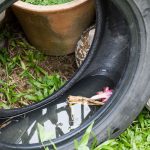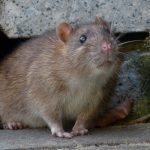
Wasp nests are common in the summertime here in the Midwest. Wasps are a summertime insect that most people encounter at one point or another. But did you know that different wasps build different types of nests? Paper wasps, mud daubers, bald-faced hornets, and yellowjackets are often confused for each other, but they can be identified by their very unique nests. If you notice any of the below nests, it’s very important to avoid them. Certain wasp species can be aggressive, especially toward people that approach their nest. Keep reading for tips on identifying different wasp nests this summer.
The Difference Between Wasp Nests
Wasp nests harbor wasp eggs and larvae. Each wasp has a different way of building their nest. Here are the main things to know about what they look like:
- Yellowjackets. Nests are a papery material and have a single opening. The inside of a yellowjacket nest can have up to 100 tiers of cells. They also lie in underground nests with thousands of insects.
- Paper wasps. Their nests famously look like upside-down umbrellas. These nests are often open, and can get quite large in size. They are typically supported by a single stalk and consist of a paper-like material.
- Mud daubers. True to name, these nests are made out of mustly mud. The nests are small and tubular in size, often looking like organ pipes. They are typically found in cracks or crevices.
- Bald-faced hornets. These nests are almost always at least three feet off the ground. They are made of chewed wood fibers mixed with saliva. They often grow to be the size of a football or basketball.
Where Are Wasp Nests Located?
Every wasp species favors a different area to build their nests. Some wasps will build them in trees, while others prefer under porch ceilings. Paper wasp nests can be located under and within the eaves of structures, in attics and wall voids, and in other enclosed areas. Yellowjackets favor areas near the ground, in hollow trees, under porches, and a number of other areas. The bald-faced hornet builds its nest oftentimes in trees, bushes, or wooded areas. Lastly, mud daubers tend to build their nests in sheltered areas, including under eaves, garages, attics, or on the sides of buildings.
Is DIY Wasp Removal Safe?
The short answer is “no”! Even when a nest appears inactive, it’s still dangerous to remove nests. Stinging insects can be aggressive when they are defending their nests. If you attempt to knock down a nest on your own, you could unleash hundreds of stinging insects, which is dangerous for anyone nearby. Always contact a professional wasp removal expert for help!






